The most interesting information about Sambac jasmine
Jasmine sambac in translation means "fragrant jasmine". This name speaks for itself. Jasmine not only has an attractive appearance, but also has a very pleasant scent.
Content:
Description of jasmine sambac
This plant is classified as an evergreen climbing shrub. Jasmine leaves can be trifoliate, pinnate or simple. This plant is characterized by the absence of stipules. The correct flowers give the originality of the appearance of this plant.
The corolla of jasmine flowers can be yellow, red or white.
Jasmine sambac does not tolerate excessive moisture, but it does not need to dry the soil too much. Jasmine blooms all year round or for several months of the year. The sambac jasmine flower is characterized by the presence of two stamens inside. These parts of the flower are characterized by the presence of short filaments. The shape of the jasmine flower is very original - it is a narrow long tube that blooms at the edge. This plant has an upper ovary, which, when ripe, turns into a berry. Jasmine sprigs are brown. Despite the fact that they are quite thin, they resemble wood in their appearance.
Plant species
Jasmine sambac has several types... The most common of them include: Mali chat, the Maid of Orleans, Beauty of India, Arab knights.
Jasmine Arab Knights:
- Belongs to the category of bushes that grow very quickly.
- This plant is very sun-loving, but at the same time it does not feel discomfort in places of shade.
- Arab knights do not like excess moisture.
- However, they should not provide very poor watering. A shrub of this variety begins to bloom in March and ends in October.
- With the right flowers, this plant is truly extravagant and extraordinary.
This shrub is able to fully develop both in the shade and in the sun.
Jasmine Beauty of India:
- It is a fast growing shrub.
- This plant was first bred by Indian breeders.
- It can be categorized as shrubs or vines.
- The beauty of this shrub is given by the correct flowers.
- The jasmine flower has two stamens inside, which are characterized by the presence of short filaments.
- The flowering of this jasmine variety is continuous.
- It can last all year round.
Jasmine Maiden of Orleans:
- Belongs to the category of fast-growing shrubs.
- For the first time, this plant was bred by Indian breeders.
- Due to the presence of the correct flowers, this plant is truly original and extraordinary.
- Blooming flowers are able to hold out on the plant for no more than a day.
- After that, they fall, and new ones fall to replace them.
- These shrubs do not like excess moisture... However, they should not provide very poor watering.
Jasmine Mali chat:
- It is a slow-growing shrub that was first bred by Indian breeders.
- This plant has double and well-smelling flowers, the diameter of which is equal to an indicator of 1.5 centimeters.
- This plant is able to fully grow both in the shade and in the sun.
- Jasmine Mali chat does not like a lot of moisture, but you should not over-drain the soil.
- This type of plant can throw out inflorescences throughout the year.
- This flower is the most difficult to grow.
- This plant is characterized by a high level of ease of growing.
Jasmine Indiana:
- It is an intermediate plant between the liana shrub, which was first grown in India.
- The diameter of the double and fragrant flowers of this plant is 1.5 centimeters.
- This type of jasmine can fully tolerate both the sun and partial shade.
- These plants do not like excessive moisture, but you should not overdry the soil.
- In winter, this plant needs to be provided with a higher temperature than its counterparts.
- The jasmine of this variety continues to bloom all year round.
Between themselves sambac jasmine species differ the size of flowers and whimsical care. A large number of varieties allows you to choose the most optimal option for interior decoration.
Plant care
Jasmine sambac is very fond of light, therefore it is necessary to plant it in a well-lit place, but at the same time it is necessary to choose such an area that will limit the jasmine from direct sunlight.
When choosing a soil for this plant, you must:
- Give preference to earth, which is characterized by lightness, air and water resistance.
- That is why, when planting jasmine, gardeners use the soil that they prepare on the basis of peat.
- The planting of this plant must be done in leafy, peaty or turfy land.
- In this case, the soil should be characterized by neutrality and slightly acidic composition.
- In order for this plant to have good flowers and grow quickly enough, it needs to be provided with regular feeding.
- This action is performed once a month.
- For this, a mixture is used that contains potassium, phosphorus and nitrogen in equal proportions.
- Increasing the amount of nitrogen in the fertilizer can negatively affect the flowering rate of the plant.
- Also, an excessive amount of this component of the mixture can lead to a decrease in the number of leaves on the plant.
- In the case of an increase in the frequency of feeding, sambac jasmine may turn yellow.
And if the plant is not fed, then it may have much smaller leaves, not bloom, or even stop growing.
In order to do not overdo it with feeding it is best to purchase ready-made fertilizer in a specialized store. The ideal option for feeding this plant is Osmokotr. But when feeding jasmine with special purchased drugs, you need to pay attention to their instructions, because each drug has a different frequency of use.
Sambac jasmine does not like excessive moisture, but the soil should not be dry either:
- That is why the plant needs to provide moderate watering.
- Watering the plant should be done with soft water at room temperature.
- If you need to soften the water, you can use small amounts of acetic or citric acid.
- In the event that excessive watering is performed on jasmine, leaves and buds that have not yet opened may fall off.
- It can also lead to the appearance of a white bloom on the stems and a lack of flowering.
- And if the sambac jasmine does not have enough moisture, then its green leaves can turn pale, dry or curl at the tips.
Jasmine sambac does not tolerate low temperatures, so it needs provide warm wintering conditions... This plant also does not like drafts, therefore, when planting it, it is necessary to choose places that are characterized by a large amount of fresh air, but without drafts.
In order to form a beautiful plant, sambac jasmine must be regularly pruned:
- This procedure should be done in early spring.
- Thin and weak branches of jasmine must be completely removed, and the main shoots must be shortened by two-thirds of their length.
- Pruning the plant correctly will result in the sambac jasmine developing new, short shoots that will bloom.
- The second pruning of the plant is done after it has faded.
This will promote the branching of the plant, as well as the formation of new flowering shoots.
This plant is transplanted every year. It propagates with the help of semi-lignified stem cuttings. For these cuttings, it is necessary to cut shoots, which are characterized by the presence of two or three internodes. These shoots can be planted immediately in the ground or placed in water. After the plant takes root in the water, it must be transplanted into the ground.
Do not forget that Sambac jasmine does not tolerate a variety of stressful conditions very badly.
It is negatively affected by a sharp change in air temperature indicators, changes in lighting or humidity, etc. Stressful situations can lead to the fact that the jasmine will shed its buds and will not bloom, as well as inhibit growth and development. When stressful situations arise, you do not need to do anything. Jasmine will independently get used to the changed conditions and stabilize its growth and bud formation.
Diseases, plant pests
Sambac jasmine is very often attacked by aphids, thrips, scale insects and spider mites.
- These pests are capable of infecting not only the leaves and buds of the plant, but also its branches.
- Very often, as a result of their appearance, sambac jasmine sheds its leaves.
- In order to preserve the beauty of the plant, it is necessary to regularly inspect it.
- In order to prevent jasmine sambac, it is sprayed with hot water, the temperature of which should be about forty degrees.
- If the pests have already attacked the flower, then it must be urgently treated with appropriate insecticides.
As for diseases, this plant is very often exposed to chlorosis.
This disease belongs to non-communicable diseases. It subsequently develops a lack of iron or magnesium in the soil. Chlorosis-affected jasmine grows very poorly, it stops flowering, and the leaves turn yellow. Insecticides that have been developed to combat chlorosis for prophylactic purposes are not recommended. This is due to the fact that these products contain a large amount of chlorosis, which negatively affects the growth and development of the plant.
Jasmine sambac is a fairly unpretentious plant.
With proper care you can ensure its health and beauty, as well as significantly decorate any landscape design. The pleasant scent of jasmine will always remind you that it is blooming nearby.
More information can be found in the video.



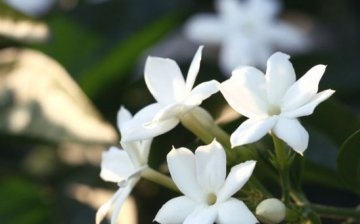
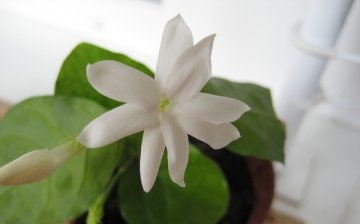
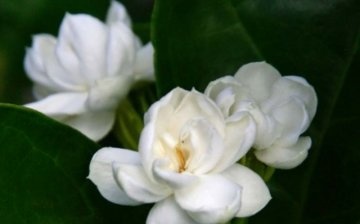
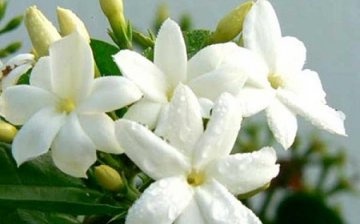
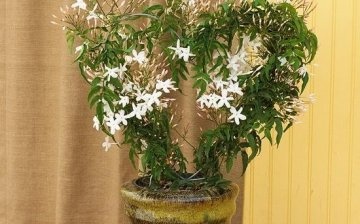
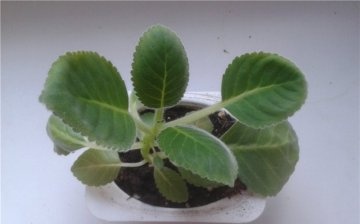
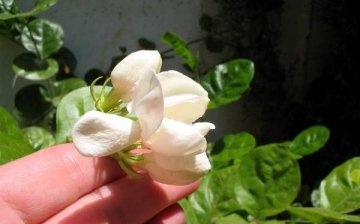







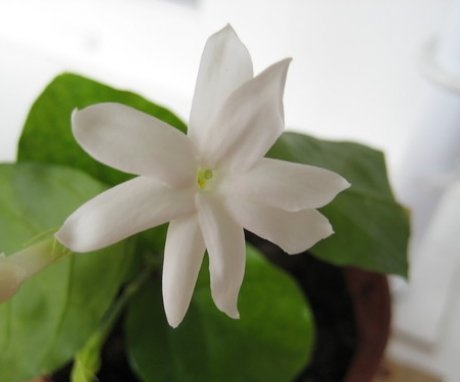
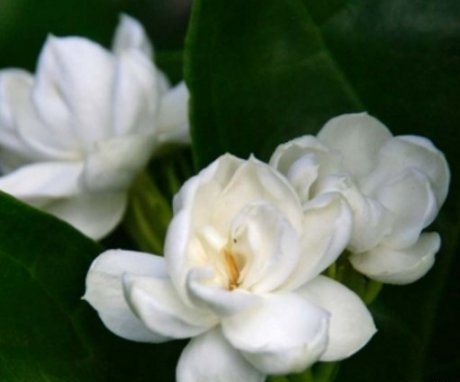
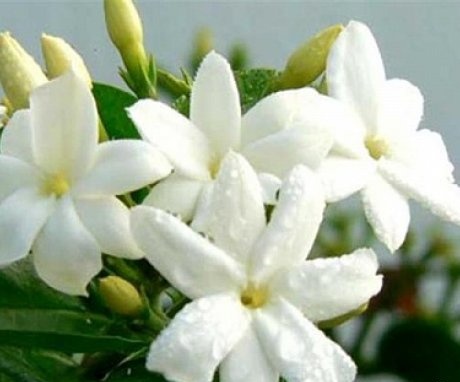
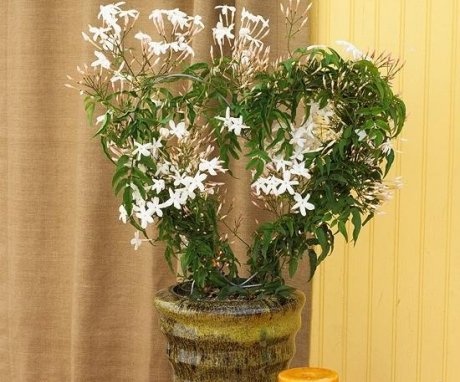
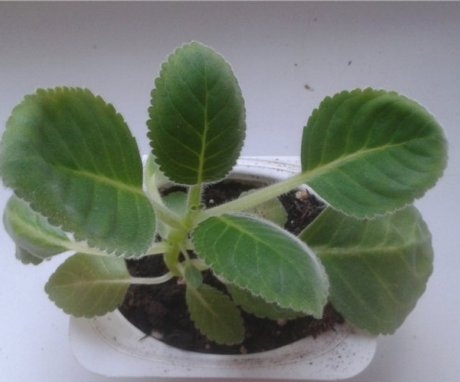
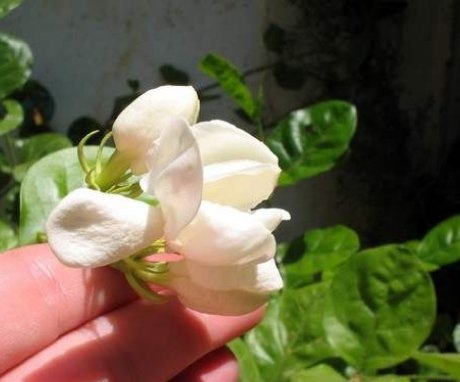
Jasmine sambac is my favorite plant. In this article, I read a lot of additional information on caring for him, which I did not even know before.